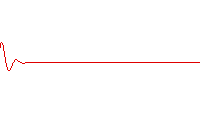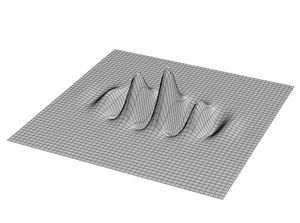Difference between revisions of "Wave packet"
KevinYager (talk | contribs) (→See Also) |
KevinYager (talk | contribs) |
||
| Line 4: | Line 4: | ||
[[File:2dpack.jpg|right|thumb|300px|A snapshot of a 2D wave packet.]] | [[File:2dpack.jpg|right|thumb|300px|A snapshot of a 2D wave packet.]] | ||
| + | |||
| + | ==Wave-particle duality== | ||
| + | In the context of [[quantum mechanics]], particles can be thought of as wave-packets. That is, quantum particles are neither ideal point-like particles, nor ideal plane-waves. They are instead intermediate objects, which are certainly wave-like (e.g. can undergo interference), but also somewhat localized. The classical concepts of 'particle' (perfectly localized; mathematically a delta-function), and 'wave' (oscillation with a single well-defined wavelength, spread infinitely over all space) can be viewed as limited cases of the general wave-packet. These limiting cases are only conceptual: in reality neither can exist. | ||
Revision as of 15:37, 12 October 2014
A wave packet is a localized wavelike perturbation.
Wave-particle duality
In the context of quantum mechanics, particles can be thought of as wave-packets. That is, quantum particles are neither ideal point-like particles, nor ideal plane-waves. They are instead intermediate objects, which are certainly wave-like (e.g. can undergo interference), but also somewhat localized. The classical concepts of 'particle' (perfectly localized; mathematically a delta-function), and 'wave' (oscillation with a single well-defined wavelength, spread infinitely over all space) can be viewed as limited cases of the general wave-packet. These limiting cases are only conceptual: in reality neither can exist.

